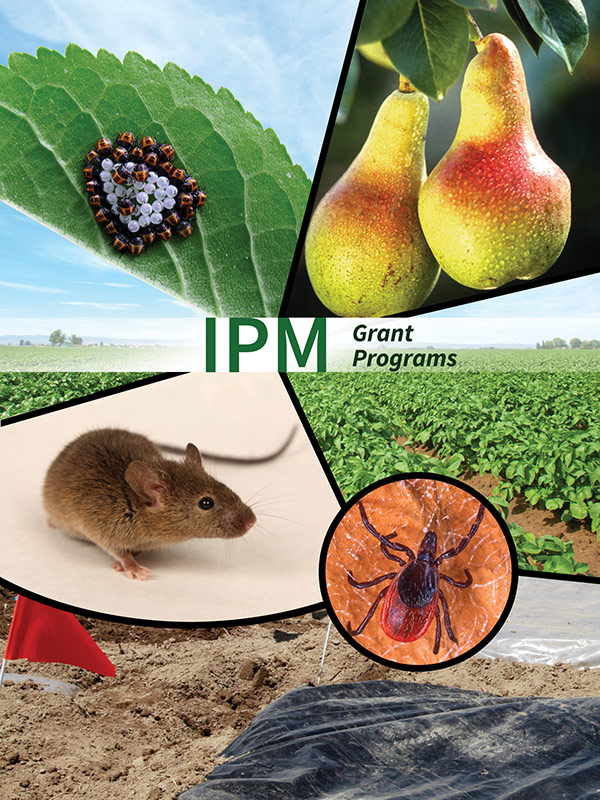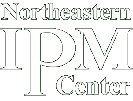Northeastern IPM Center Announces Recipients of 2025 Partnership Grants
 |
Annual grant program supports IPM research and extension in the Northeast
The Northeastern Integrated Pest Management (IPM) Center has announced the recipients of its 2025 Partnership Grants.
Each year, through a competitive request-for-applications (RFA) process, the Center’s IPM Partnership Grants Program distributes funding to projects that further the mission of the Center, address or identify IPM priorities for the Northeast, and benefit the region at large. The total pool of available funding for 2025 projects was $160,000, generally with a maximum of $40,000 per award.
Each funded project falls under one of three categories: applied research, communications, and working groups.
This Year’s Funded Projects by Category
Applied Research
- Seedborne Disease Screening on Organic Dry Beans in the Northeast (Heather Darby, Agronomist and Nutrient Management Specialist – University of Vermont and State Agricultural College)
- Optimizing IPM Tools To Manage Anthracnose Crown Rot of Strawberry in the Northeast (Nathaniel Westrick, Assistant Agricultural Scientist – Connecticut Agricultural Experiment Station)
Communications
- Development and Circulation of Novel Pollinator Education Resources for the Northeast (Jason Lanier, Extension Specialist and Group Leader, Commercial Horticulture | Nicole Bell, Extension Pollinator Specialist – University of Massachusetts Amherst)
Working Group
- Sweet Corn IPM Working Group (Kelly Hamby, Associate Professor and Extension Specialist of Sustainable Agroecosystems Entomology – University of Maryland)
About the Projects
Seedborne Disease Screening on Organic Dry Beans in the Northeast
Dry beans (Phaseolus spp.) are well suited for the Northeast as they serve as a great addition to grain rotations and are a highly marketable crop. However, due to climate change, weather conditions in the Northeast are becoming more suitable for disease outbreaks. Approximately 50 percent of the major dry bean pathogens can be seedborne or seed transmitted (Loria 2021). This is particularly concerning for organic dry bean growers in the Northeast that rely on saved seed for planting future crops. There has not been a dry bean seedborne pathogen assessment conducted in the Northeast to better understand the prevalence of these pathogens, along with other seedborne pathogens whose incidence may be increasing with climate change. In order for researchers and extension staff to better understand the issues organic dry bean growers are facing in this region we will evaluate seed lots from organic farms throughout the Northeast to determine which seedborne pathogens are posing the highest risk.
Optimizing IPM Tools To Manage Anthracnose Crown Rot of Strawberry in the Northeast
Historically, cold northern winters have protected the region’s strawberry crop from many pathogens, but in 2023 an outbreak of strawberry anthracnose crown rot (ACR) in Connecticut, caused by the fungus Colletotrichum siamense, led to major crop losses. While common in the southeastern United States, ACR poses new challenges in the Northeast due to different farming practices and the susceptibility of regional varieties. The first step in addressing this knowledge gap is to assess the utility of pre-plant fungicide dips as a simple and cost-effective method to eliminate/reduce pathogen populations in nursery material as a form of exclusion. The next critical step is the selection of tolerant and/or resistant strawberry varieties, given that genetic resistance is incredibly effective for disease management, but no information on ACR susceptibility is available for commercially available northern varieties. Finally, the year in which serious disease was first observed in Connecticut coincided with the outbreak of climate-change driven wildfires. Preliminary studies have shown that the pathogen exclusively sporulates in darkness, raising questions about the role that increased rain and wildfire events which block the sun may play on the effective management of ACR.
Development and Circulation of Novel Pollinator Education Resources for the Northeast
Pollinators are essential to environmental and ecological health, as 87 percent of flowering plant species and 70 percent of crops rely on animal-mediated pollination services. Urban environments pose unique risks to pollinators, including habitat loss and fragmentation, and urbanization is only projected to increase in the coming years. Research indicates that pollinators are experiencing declines, but we also know that urban green spaces can function as a refuge for pollinator groups. Moreover, urban green spaces provide important social benefits and fulfillment of socio-cultural needs, but pollination needs are not met in 27 percent of urban farm systems. This project will create and disseminate educational materials and practical management guidelines through collaboration with New England universities and other partner organizations to maximize native pollinator health and abundance in urban and semi-urban areas throughout New England.
Sweet Corn IPM Working Group
Sweet corn’s taste and versatility make it a favorite among consumers and an essential (ranks second for harvested acres) vegetable crop for U.S. food systems. Insect, weed, and pathogen pests reduce marketable yield and increase management costs. Management efforts also may pose risks to human health and the environment, risks that can be mitigated through the adoption of Integrated Pest Management (IPM). This project will help sweet corn producers remain economically viable and encourage them to adopt IPM by improving interdisciplinary collaboration and coordination among professionals working in sweet corn. We anticipate this working group will engage additional sweet corn producers beyond those who already participate in our extension programming, encourage the use of production guides, increase IPM adoption, and lead to new collaborations and extension resources. Ultimately, stakeholders will be more successful managing pests of sweet corn, and capacity for meeting needs in sweet corn will also be expanded through these efforts.
About the Partnership Grants Program
To learn more about the IPM Partnership Grants Program, visit neipmc.org/go/bfgs.
To receive Center news and announcements, including information about the Partnership Grants RFA, please sign up for our e-mail list and follow us on social media at www.northeastipm.org/about-us/contact/.
